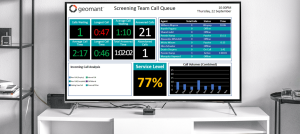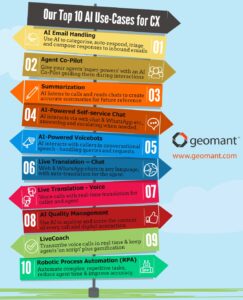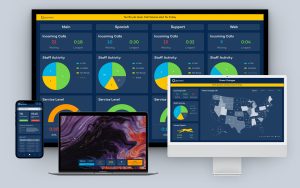On the surface, call barging doesn’t sound positive. The concept of “barging” comes with naturally negative connotations. We see people who “barge” as rude and intrusive – but in the contact center landscape, this word takes on a different meaning.
A solution designed to help empower, support, and engage today’s contact center agents, call barging allows supervisors and managers to listen in on calls and offer assistance. As found in Buzzeasy Contact Center for Microsoft Teams, this technology can reduce the risk of customer churn by allowing experienced managers to step in and preserve a client relationship when a conversation is going poorly.
Call barging can also be a powerful investment for improved staff training and support, particularly at a time when more employees are working remotely.
What Does Call Barging Mean?
Featured in some of the most popular contact center solutions, call barging is a tool for effectively managing client relationships. In the contact center setting, it allows supervisors and managers to monitor calls and either contribute to or takeover conversations when necessary.
Call barging can be utilized as a part of a training strategy to enhance the performance of contact center agents or as a tool to maintain client satisfaction.
Imagine you are a contact center supervisor managing a hybrid team. Your dashboard or Geomant wallboard technology is there to provide insight into your team metrics, including which of your staff are excelling and who may be struggling.
If your wallboard solution alerted you to dropping customer satisfaction rates for a specific agent, the combination of monitor, barge, and whisper features would allow you to assist the agent by listening in, whispering advice, or barging in if immediate action is required.
What are the Benefits of Call Barging?
In today’s competitive marketplace, every interaction with a customer can make or break your brand. Every client who leaves a conversation unhappy could potentially abandon your business, and move to one of your competitors.
Call barging with monitoring helps to:
- Improve call quality: When you can listen to live calls at any moment, it’s easy to see when call quality problems are having an impact on your brand reputation.
- Better agent training: Training employees in today’s hybrid contact center environment can be complicated. It’s difficult to know where your staff is struggling when you’re not on-hand to listen to calls. With call monitoring and barging, you can track the areas in conversations where your agents might be having the most trouble. This helps to inform training strategies.
- Reduce the need for call escalation: In any situation, customers often hate being transferred. Your clients want their problems to be solved immediately when they contact your team. This “barging” methodology means managers don’t have to wait for a call to be passed onto them before they are provided with an opportunity to resolve an issue. This significantly improves first-time resolution rates.
- Provide a higher quality of service: For VIP customers, every second of a call is crucial. When you know your agents are dealing with an important customer, it helps to have a call barging feature integrated to ensure supervisors can leap in if they feel the client isn’t getting the right level of service.
- Improve hybrid agent management: Remote and hybrid employees are emerging as a common part of the contact center. In this landscape, supervisors and managers can have a lot of trouble determining how to keep track of their staff. Call barging gives managers more control over how they support, empower, and handle their staff – regardless of where agents are located.
Call Barging: Good for Customer and Employee Experience
Perhaps the most significant benefit of call barging is the ability to preserve important customer relationships and reduce the risk of churn in a complex service environment. As customers continue to heighten their expectations when it comes to the kind of service they want to receive, companies need to be agile, prepared, and ready to act.
A call barging function, combined with call monitoring and whispering tools, Geomant wallboard for instant alerts, and real-time reporting, can create a more informed, efficient team ready to deliver exceptional service. Not only does your customer benefit from a better quality of support, but employees can benefit too.
Rather than having to deal with the headache of lost opportunities and clients, agents can get guidance and insights at the moment when a call goes wrong, teaching them how to overcome similar problems in the future. This can help your staff to feel more confident and engaged in the long term. Plus, it helps to know a supervisor is on-hand and ready to help when a call is going poorly.
Does Your Contact Center Need Call Barging?
Call barging is a fantastic tool for today’s contact centers and customer experience teams. More than just a way for supervisors to swoop in and take over on a call, call barging is a powerful solution for preserving customer satisfaction and agent efficiency in the new age of CX.
Imagine how much more effective your customer service strategy could be if your supervisors and managers had the opportunity to jump into a call when agents needed them most? Consider how happy your customers would be with fewer transfers? If you’re keen to discover the benefits of call barging with Buzzeasy Contact Center for Microsoft Teams, contact Geomant today.











